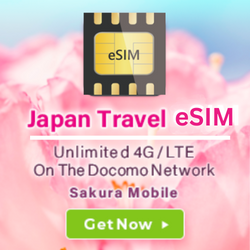Are you traveling to Japan during New Year’s? You might’ve heard that most stores are closed during this time, and you’re worried about your trip. 😰
Japan has its own unique traditions, and this time of year is a special occasion for many families to gather and ring in the New Year together.
Whether you’re a visitor or a resident, understanding these customs can help you fully appreciate the season’s unique charm. It’s also important to be prepared for any hiccups in your itinerary due to holiday hours!
In this guide, you’ll learn all about celebrating New Year’s in Japan, and we’ll share some important travel tips you need to know. Let’s get this party started!🥳

Hello readers! Sakura Mobile is a SIM Wi-Fi service provider for international residents and tourists in Japan.
Our global editorial team living in Japan will introduce the country’s charms based on what we have experienced and felt.
For residents in Japan, having a Japanese phone number can be vital when making reservations during the busy New Year’s period!
You’re in luck, because Sakura Mobile also offers long-term plans such as our Voice + Data SIM. Check out our plans below and keep reading for tips on celebrating New Year’s like a local!🎉


Table of Contents
Overview of New Year’s in Japan
- Welcoming the New Year
- Traditional Practices and Rituals
- Traditional Food
- Fun and Games
- Practical Tips
- Conclusion
Overview of New Year’s in Japan
New Year’s, or shōgatsu (正月), is one of Japan’s most important holidays, and Japanese people look forward to this period as a time of renewal and gathering with loved ones. Like Christmas in Western countries, many people travel back home for the New Year to celebrate with their family over traditional foods and games.
Check out some useful words for New Year’s in Japan below!

Most companies will close for the end of the year (around Dec. 28 – Jan. 3), but we will talk more about that here if you want to jump ahead to the New Year’s calendar.
Keep reading for our guide to celebrating New Year’s in Japan! ✨
↑ Go back to the table of contents
1. Welcoming the New Year
Decorations for New Year’s 🎍
You’ll also find Christmas decorations in Japan around this time of year. Once Christmas is over, many people in Japan start putting up their New Year’s decorations. Here are some traditional Japanese New Year decorations you might see during your visit:

New Year Countdown Shows 🎊

For those staying up late, Japanese TV features special New Year’s Eve countdown shows. One of the most popular shows is Kōhaku Uta Gassen.
Produced by NHK, Kōhaku features a live musical competition between Japan’s most popular singers and bands, divided into competing red and white teams. At the end, votes from the audience and a panel of judges determine the winning team.
↑ Go back to the table of contents
2. Traditional Practices and Rituals
Hatsumode (First Shrine Visit) ⛩️

The year’s first shrine or temple visit, hatsumode, is a cornerstone of Japanese New Year traditions, where people pray for health, happiness, and success in the coming year. January 1st is the most crowded day, so some people try to visit within the first week of January and avoid popular shrines like Meiji Shrine in Tokyo.
A popular hatsumode activity at shrines is to buy lucky charms/amulets called omamori and to get your fortune with omikuji — slips of paper with random fortunes written on them.
Whether you’re visiting Meiji Shrine or another famous spot for hatsumode, having a reliable connection makes it easier to navigate crowded areas and share your omikuji with loved ones back home!
To learn more about data and WiFi options for your trip, check out our products below! ⬇️
Hatsuhinode (First Sunrise) 🌅
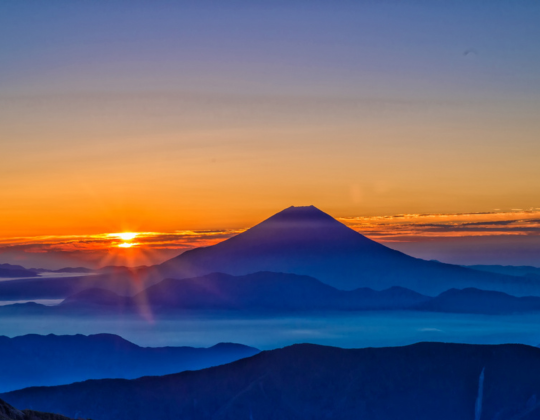
Many people wake up early or stay up all night to witness the year’s first sunrise. This tradition, hatsuhinode, is believed to bring good luck and a fresh start. Popular spots to view the sunrise include coastal areas, mountain peaks (like Mt. Fuji!), and even rooftops in the city.
Hatsuyume (First Dream) 💤

The first dream you have in the new year, hatsuyume, is considered an omen for the year ahead. Traditional symbols of good fortune include Mt. Fuji 🗻, a hawk 🦅, and an eggplant. 🍆
Kakizome (First Calligraphy) 🖌️

On January 2nd, many people practice kakizome, or first calligraphy. Writing auspicious phrases or personal goals in traditional Japanese script is a reflective way to start the year with intention.
Nengajo (New Year’s Cards/年賀状) ✉️

Sending and receiving nengajo is a cherished custom. These New Year’s postcards often feature seasonal designs and messages of goodwill, and they’re delivered on New Year’s Day (if sent in time!).
↑ Go back to the table of contents
3. Traditional Food
You can’t celebrate the New Year without food! Here are some of the most common foods found in Japanese New Year cuisine:


Toshikoshi Soba (年越しそば) 🍜
Eating toshikoshi soba (year-crossing noodles) on New Year’s Eve symbolizes longevity and resilience. The long noodles represent a long and healthy life.
Osechi Ryori (お節料理) 🍱
Traditional New Year’s meals, or osechi ryori, are beautifully arranged in multi-tiered lacquered boxes. Each dish has a symbolic meaning, such as black soybeans (kuromame) for health and herring roe (kazunoko) for fertility. Stores and restaurants offer pre-made osechi sets, making it easy to enjoy this culinary tradition.
↑ Go back to the table of contents
4. Fun and Games
Traditional Games 🎴
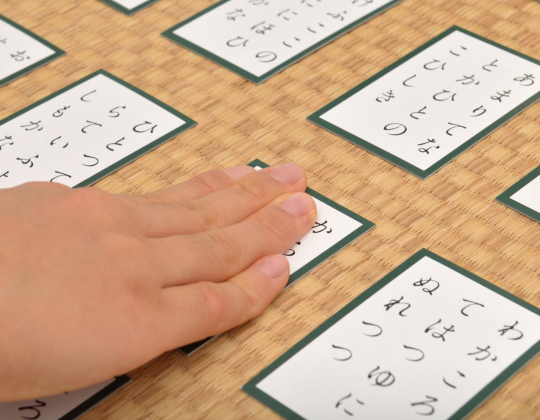
New Year’s is a time to enjoy traditional Japanese games. Families often play karuta, a card game requiring quick thinking and knowledge of classic Japanese poetry. Other activities include spinning tops (koma) and hanetsuki (a badminton-like game).
At festivals like the Asakusa Toshi-no-Ichi Fair, you can find beautifully decorated paddles for hanetsuki!
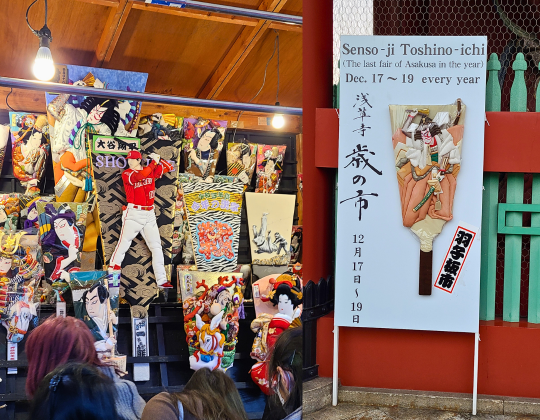
Fukubukuro (Lucky Bags/福袋) 🛍️
Shopping for fukubukuro, or lucky bags, is a popular activity to test your luck in snagging discounted goods. These grab bags contain a surprise selection of items from retailers, and you might score some rare or expensive items at a discount.
Traditionally, crowds would line up in stores for exclusive fukubukuro around January 1st to January 3rd, but many bags can now be purchased or reserved online. The most popular lucky bags may even sell out in advance, so make sure to pre-order early! Popular fukubukuro include Starbucks, Pokemon Center, and Mister Donut.

↑ Go back to the table of contents
5. Practical Tips
Year-end and New Year Holiday Calendar

Most companies will close from December 28th or 29th to January 3rd, though some businesses may close earlier or reopen later. Taking advantage of this break, many people in Japan go back to their hometowns or travel during the end of the year, which leads to crowded airports, trains, and expressways. Make sure to plan accordingly!
In addition to store closures, other services may experience reduced hours or suspension. Here are some important services affected by the holidays:

Most large department stores, supermarkets, and chain restaurants will be open for most of the holiday period but will most likely be closed on January 1st. However, convenience stores like Lawson, 7-11, and Family Mart are open every day, so you shouldn’t run into any issues finding food in emergencies.
Check out some more of our tips below:
1. Make Reservations Ahead of Time
New Year’s is one of the busiest travel periods in Japan. If you plan to stay in hotels, visit restaurants, or participate in special events, make early reservations to secure your spot.
2. Plan Shrine Visits for Off-Peak Times
Shrines and temples can become extremely crowded during hatsumode, especially on January 1st. Consider visiting a few days after New Year’s Day to avoid long lines.
3. Carry Some Cash
While Japan is increasingly cashless, many smaller businesses, temples, and shrines still only accept cash, especially for activities like buying omamori (Japanese amulets for luck, health, etc.) or drawing omikuji (“fortune lot” or “fortune slips of paper”). Be sure to withdraw cash ahead of the holidays.
4. Stock Up on Essentials
Many stores and supermarkets close during the New Year’s holidays, particularly from December 31st to January 2nd. Stock up on groceries, toiletries, and other essentials before these dates to avoid inconvenience.
5. Stay Connected
Reliable internet access is crucial for navigating transportation, finding open stores, or sharing your holiday experiences. Make sure to secure a SIM or pocket WiFi for your trip.
Traveling around Japan during the New Year’s holiday season can be tricky without WiFi, and finding free WiFi in Japan can be hard.
Ensure a smooth and stress-free holiday by staying connected with a travel SIM or Pocket Wi-Fi from Sakura Mobile!
With reliable internet access, you can focus on enjoying the magic of New Year’s in Japan without worry.
↑ Go back to the table of contents
Conclusion
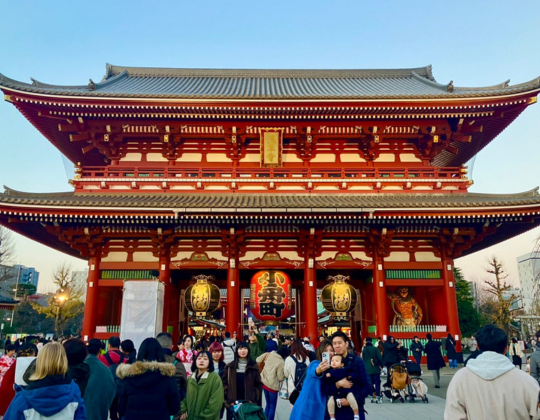
New Year’s in Japan is a magical time filled with meaningful traditions and joyous celebrations. Whether you’re savoring toshikoshi soba, watching hatsuhinode, or trying your hand at kakizome, participating in these customs offers a unique glimpse into Japanese culture. We hope this guide helps you enjoy the holiday to its fullest.
From all of us at Sakura Mobile, Happy New Year! (Akemashite omedetou gozaimasu!) 🎉





